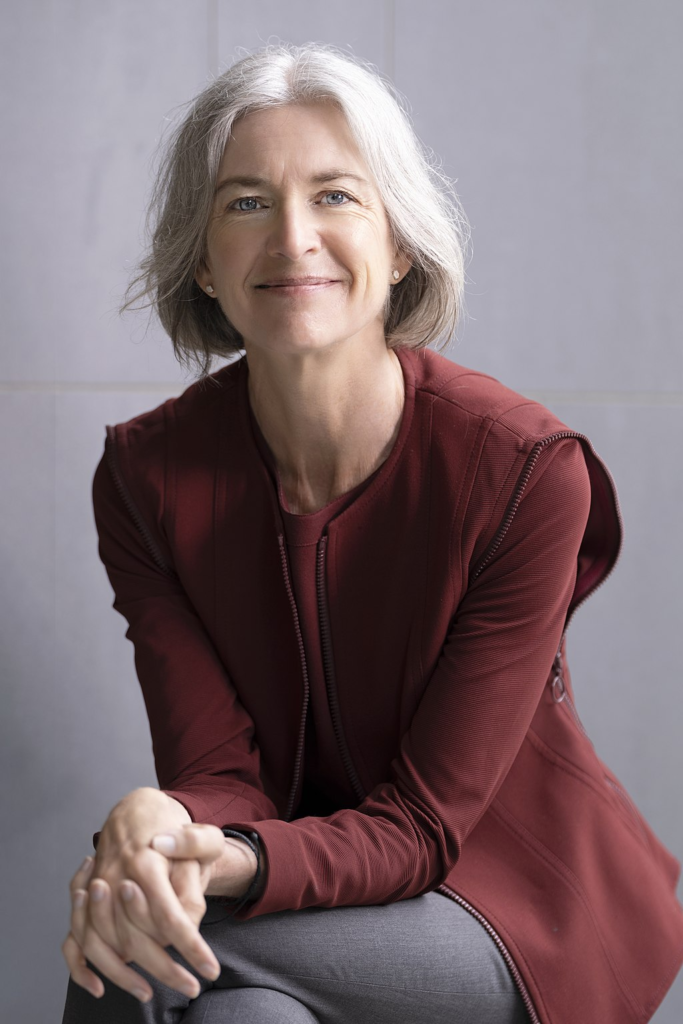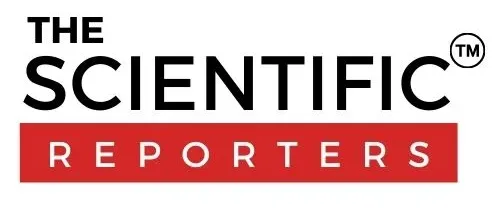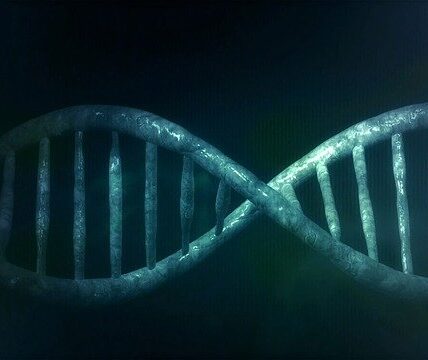Biotechnology is a rapidly advancing field that has the potential to revolutionise the way we live our lives. It involves the use of living organisms or their components to create new products or processes that benefit society. Women have played a critical role in the development of biotechnology, making significant contributions to the field through their research, innovation, and leadership. Despite their contributions, women remain underrepresented in the field, with fewer opportunities for advancement and recognition compared to their male counterparts. In this article, we will highlight some of the most prominent women scientists in biotechnology and their contributions to the field.
1. Rosalind Franklin:

Rosalind Franklin was an English chemist and X-ray crystallographer who played a key role in the discovery of the structure of DNA. Franklin’s work on X-ray diffraction images of DNA molecules provided critical information about the structure of DNA, which was used by James Watson and Francis Crick to develop their model of the double helix.
Despite her contribution to the discovery of the structure of DNA, Franklin’s work was largely unrecognized during her lifetime. Franklin died at the age of 37 from ovarian cancer and was not awarded the Nobel Prize for her contribution to the discovery of the structure of DNA. Instead, the prize was awarded to Watson, Crick, and Maurice Wilkins, who used Franklin’s data without her permission.
2. Jennifer Doudna:

Jennifer Doudna is an American biochemist and the recipient of the 2020 Nobel Prize in Chemistry for her work on the CRISPR-Cas9 gene editing system. Doudna and her colleagues developed a new method for gene editing that allows scientists to make precise changes to DNA sequences.
Doudna’s work on CRISPR-Cas9 has the potential to revolutionize medicine, agriculture, and biotechnology by allowing scientists to cure genetic diseases, create new and more effective drugs, and improve crop yields.
Doudna has been recognized with numerous awards for her groundbreaking work, including the Breakthrough Prize in Life Sciences, the Japan Prize, and the Kavli Prize. She is also a member of the National Academy of Sciences, the National Academy of Medicine, and the American Academy of Arts and Sciences.
3. Frances Arnold:

Frances Arnold is a chemical engineer and biochemist who is best known for her work in directed evolution, a process that allows scientists to engineer new enzymes with desired properties. Arnold’s work has led to the development of new enzymes for a range of applications, from the production of biofuels to the treatment of diseases.
Arnold was awarded the Nobel Prize in Chemistry in 2018 for her work in directed evolution, becoming the fifth woman to win the prize in chemistry. She is also a member of the National Academy of Sciences, the National Academy of Engineering, and the American Academy of Arts and Sciences.
At Caltech, Arnold runs a laboratory that continues to study directed evolution and its applications in environmentally-friendly chemical synthesis and green/alternative energy, including the development of highly active enzymes (cellulolytic and biosynthetic enzymes) and microorganisms to convert renewable biomass to fuels and chemicals.
4. Barbara McClintock:

Barbara McClintock was an American geneticist and the recipient of the 1983 Nobel Prize in Physiology or Medicine for her work on transposable elements. McClintock discovered that genes can move within and between chromosomes, which was a groundbreaking discovery that challenged the traditional view of genetics.
McClintock’s work on transposable elements has had a significant impact on our understanding of genetics and has led to the development of new techniques for genetic engineering and gene therapy. The importance of McClintock’s contributions was revealed in the 1960s, when the work of French geneticists François Jacob and Jacques Monod described the genetic regulation of the lac operon, a concept she had demonstrated with Ac/Ds in 1951. Following Jacob and Monod’s 1961 Journal of Molecular Biology paper “Genetic regulatory mechanisms in the synthesis of proteins”, McClintock wrote an article for American Naturalist comparing the lac operon and her work on controlling elements in maize. Even late in the twentieth century, McClintock’s contribution to biology was still not widely acknowledged as amounting to the discovery of genetic regulation.
5. Gerty Cori:

Gerty Cori was a Czech-American biochemist and the recipient of the 1947 Nobel Prize in Physiology or Medicine for her work on the metabolism of carbohydrates. Cori and her husband, Carl Cori, discovered the enzyme that is responsible for the conversion of glucose to glycogen in the liver, which is critical for the regulation of blood sugar levels.
Cori’s work on the metabolism of carbohydrates has had a significant impact on our understanding of diabetes and other metabolic disorders.
With her husband Carl and Argentine physiologist Bernardo Houssay, Gerty Cori received the Nobel Prize for the discovery of the mechanism by which glycogen—a derivative of glucose—is broken down in muscle tissue into lactic acid and then resynthesized in the body and stored as a source of energy (known as the Cori cycle). They also identified the important catalyzing compound, the Cori ester. The Coris were the third ever married couple to win the Nobel Prize. In 2004, both Gerty and Carl Cori were designated a National Historic Chemical Landmark in recognition of their work in clarifying carbohydrate metabolism.
In 1957, Gerty Cori died after a ten-year struggle with myelosclerosis. She remained active in the research laboratory until the end of her life. She received recognition for her achievements through multiple awards and honors.
6. Ada Yonath:

Ada Yonath is an Israeli crystallographer and the recipient of the 2009 Nobel Prize in Chemistry for her work on the structure of ribosomes. Yonath used X-ray crystallography to determine the structure of ribosomes, which are responsible for the synthesis of proteins in all living organisms.
Yonath’s work on the structure of ribosomes has had a significant impact on our understanding of how proteins are synthesized and has led to the development of new antibiotics that target the ribosome. In 1970, she established what was for nearly a decade the only protein crystallography laboratory in Israel. Then, from 1979 to 1984 she was a group leader with Heinz-Günter Wittmann at the Max Planck Institute for Molecular Genetics in Berlin. She was visiting professor at the University of Chicago in 1977–78. She headed a Max-Planck Institute Research Unit at DESY in Hamburg, Germany (1986–2004) in parallel to her research activities at the Weizmann Institute.
7. Cynthia Kenyon:

Cynthia Kenyon is a biologist who is best known for her work in aging research. Kenyon’s research has focused on the genetic and molecular mechanisms that regulate aging, with the goal of developing new therapies to extend healthy lifespan. She was one of the first scientists to demonstrate that changes in single genes can extend the lifespan of animals, and her work has led to the discovery of several key genes involved in the aging process.
Kenyon has received many honors, including the King Faisal Prize for Medicine, the Association of American Medical Colleges Award for Distinguished Research, the Ilse & Helmut Wachter Award for Exceptional Scientific Achievement, and La Fondation IPSEN Prize, for her findings. She is a member of the U.S. National Academy of Sciences and the American Academy of Arts and Sciences. She was President of the Genetics Society of America for 2003.
8. Dr. Mary-Claire King

Dr. Mary-Claire King is a geneticist and professor at the University of Washington. She is known for her work on the identification of the BRCA1 gene, which is linked to an increased risk of breast cancer. Her work has led to the development of new methods for early detection and treatment of breast cancer.
Besides known for her accomplishment in identifying breast cancer genes, King is also known for demonstrating that humans and chimpanzees are 99% genetically identical and for applying genomic sequencing to identify victims of human rights abuses. In 1984, in Argentina, she began working in identifying children who had been stolen from their families and adopted illegally under the military dictatorship during the Dirty War (1976–1983). She has received many awards, including the Lasker Award and the National Medal of Science. In 2002, Discover magazine recognized King as one of the 50 most important women in science.
9. Dr. Elizabeth Blackburn

Dr. Elizabeth Blackburn is a molecular biologist and professor at the University of California, San Francisco. She is known for her work on telomeres, the protective caps at the ends of chromosomes.
In recent years Blackburn and her colleagues have been investigating the effect of stress on telomerase and telomeres with particular emphasis on mindfulness meditation. She is also one of several biologists (and one of two Nobel Prize laureates) in the 1995 science documentary Death by Design/The Life and Times of Life and Times. She also featured in the 2012 Emmy award-winning science documentary, ‘Decoding Immortality’ (also known as ‘Immortal’) by Genepool Productions.
At the University of California San Francisco, Blackburn currently researches telomeres and telomerase in many organisms, from yeast to human cells. The lab is focused on telomere maintenance, and how this has an impact on cellular aging. Many chronic diseases have been associated with the improper maintenance of these telomeres, thereby effecting cellular division, cycling, and impaired growth. At the cutting edge of telomere research, the Blackburn lab currently investigates the impact of limited maintenance of telomeres in cells through altering the enzyme telomerase.
10. Nancy Hopkins

Nancy Hopkins is a molecular biologist who played a key role in identifying the genetic basis of cancer. She also co-founded the Whitehead Institute for Biomedical Research at the Massachusetts Institute of Technology (MIT) and has been an advocate for women in science.
Hopkins stated that when she was an undergraduate in the 1960s, Francis Crick put his hands on her breasts during a lab visit. She described the incident: “Before I could rise and shake hands, he had zoomed across the room, stood behind me, put his hands on my breasts and said, ‘What are you working on?'”
11. Bonnie Bassler

Bonnie Bassler is a microbiologist who studies quorum sensing, a mechanism by which bacteria communicate with one another. Her research has led to the development of new antibiotics that target bacterial communication, which could help combat antibiotic resistance.
During her postdoctoral research, Bassler experimented with genetic manipulation of bioluminescent genes in V. harveyi bacteria and discovered that this bacteria had multiple molecules for quorum sensing. She found that these bacteria use quorum sensing to turn on and off a large number of genes in response to communications from other bacteria. These communications and responses allow bacteria of the same species and of different species to cooperate in a similar manner to multi-cellular organisms. She extended this research in series of experiments leading to the discovery that boron binding is used as a co-factor in communication. Boron is found in abundance in the oceans where V. harveyi is found.
Bassler’s lab focuses on intra- and inter-species communication, self versus non-self recognition, information transferring, and population level cooperation. Research topics include: How bacteria distinguish self from other: ligand-receptor interactions, Dynamics: small RNA regulation of quorum sensing, Biofilms under flow and the public goods dilemma, Manipulation of quorum sensing on demand, and microbiome quorum sensing and inter-kingdom communication
12. Alice Ting
Ting is a biochemist who develops tools to study and manipulate biological systems. Her work has led to the creation of new imaging techniques that allow scientists to visualize biological processes in real-time.
In addition, Ting and her lab developed monovalent streptavidin, site-specific biotinylation in mammalian cells, small monovalent quantum dots for single molecule imaging, APEX2 as a genetic tag for electron microscopy (analogous to green fluorescent protein but visible by electron microscopy), split horseradish peroxidase for visualization of synapses in vivo, FLARE (fast light- and activity-regulated expression) for gaining genetic access to activated neural ensembles, SPARK (specific protein association tool giving transcriptional readout with rapid kinetics) for transcriptional readout of protein-protein interactions, and PRIME (probe incorporation mediated by enzymes) – a protein labeling technique that enables scientists to capitalize on the brightness, photostability, small size, and chemical diversity of small-molecule probes as an alternative to green fluorescent protein.
13. Rachel Haurwitz

Rachel Haurwitz is a biochemist who co-founded Caribou Biosciences, a biotechnology company that develops CRISPR-based gene-editing therapies. She has also been a vocal advocate for diversity in the biotech industry.
In 2011, Haurwitz and Doudna co-founded Caribou Biosciences, a gene editing spinout–startup company.[6] Haurwitz is the company’s CEO and president. She holds several patents for CRISPR-based technologies. The firm was initially housed in the basement of the building that housed Doudna’s laboratory. The company supports the commercialization of CRISPR technology in healthcare and agriculture. Its researchers explore issues in antimicrobial resistance, food scarcity, and vaccine shortages. The company licensed Berkeley’s CRISPR patent and deals with agricultural and pharmaceutical companies and research firms. In 2018, Haurwitz announced that the firm was shifting focus on medicine and developing cancer therapies targeting microbes.
14. Susan Desmond-Hellmann

Susan Desmond-Hellmann is a physician and scientist who has held leadership roles at several biotechnology companies, including Genentech and the Bill and Melinda Gates Foundation. She has been instrumental in developing new cancer treatments and advancing global health initiatives.
15. Jennifer Petter
Jennifer Petter is a biochemist who founded the biotechnology company Arrakis Therapeutics, which develops RNA-targeted therapies for cancer and other diseases. She has also been an advocate for women in science and entrepreneurship.
16. Elizabeth Holmes
Elizabeth Holmes is a controversial figure who founded Theranos, a biotechnology company that claimed to have developed a revolutionary blood testing technology. However, the company was later revealed to have misled investors and patients about the accuracy of its tests.
17. Feng Zhang
Feng Zhang is a biochemist who co-invented CRISPR-Cas9 and has been a leading figure in the development of gene-editing technologies. He has also been a vocal advocate for open access to scientific research.
18. Nancy Wexler
Nancy Wexler is a geneticist and the president of the Hereditary Disease Foundation. She has made significant contributions to the understanding of Huntington’s disease and has worked to develop treatments for the disease.
19. Brenda Milner
Brenda Milner is a neuropsychologist and professor at McGill University. She has made significant contributions to the understanding of memory and the brain and was awarded the Kavli Prize in Neuroscience in 2014.
20. Margaret Brimble
Margaret Brimble is a chemist and the first woman in New Zealand to be awarded the Royal Society of Chemistry’s Tilden Prize. She has made important contributions to the development of drugs for cancer and other diseases.
21. Wendy Bickmore
Wendy Bickmore is a geneticist and professor at the University of Edinburgh. She has made important contributions to the understanding of chromatin structure and its role in gene regulation.
22. Jill Banfield
Jill Banfield is a geomicrobiologist and professor at the University of California, Berkeley. She has made important contributions to the study of microbial communities
Follow The Scientific Reporters for more such interesting updates!






















